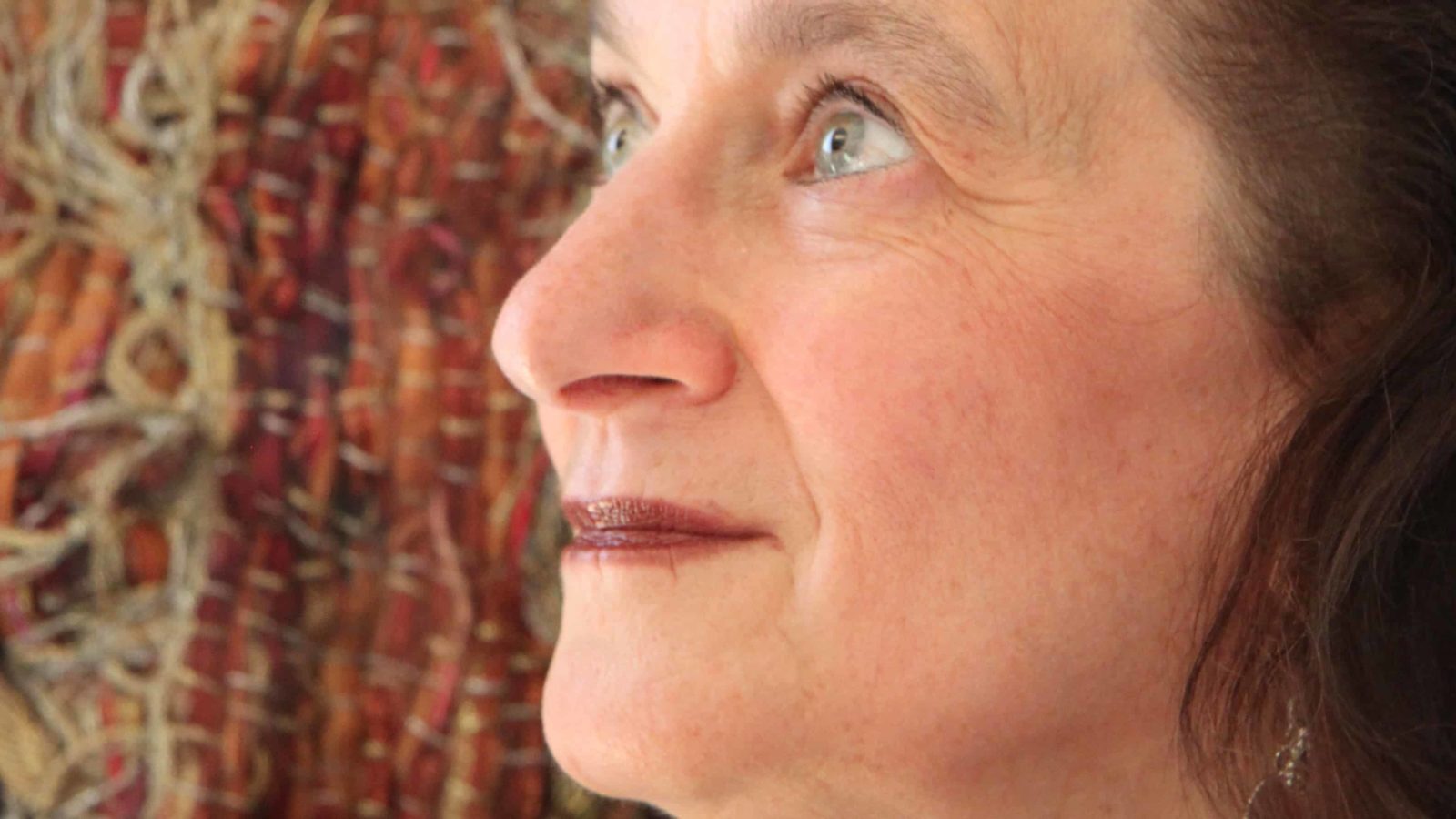As a girl growing up on the south side of Chicago, Wendy Rabinowitz would wake at 6 a.m. and slip out of her house to walk a mile to Lake Michigan, to see the sunrise. Her father would come after her, she said, anxious that she had walked the city streets alone. But she needed to see the light on the water.
Now she sees the sun on the mountains in the morning, stark and beautiful, and carries it into her Pittsfield studio.
Today she is dressing her wooden loom. A Swedish crafter made it for his children, she said, and she found it as a piece of junk and restored it. Now it helps her to make an art of restoration.
She weaves bright tapestries — and with these weavings, and elements of wood or metal, stone or paper, she creates scenes, abstract landscapes, rooted in stories. A tree of life bears fruit of jasper and lapis lazuli. A woven length of crimson and orange and gold folds and flames into a burning bush. Fingerling bronze-colored trees stand on an expanse of sunset-hued hillside.
“My work has particular themes,” she said: healing the mind and body, “healing the planet, environmentally, in relationships. And feminism.”
She roots her art in the Old Testament, in psalms, mysticism and the thousands of years of stories, Midrash, that have grown around Jewish teaching and traditions — and her work has as wide a theme and as wide an appeal as shalom — peace, wholeness, to be safe and complete, to reciprocate.
She has built her new solo show around “Women at the Wall,” her iconic artwork, which has appeared at the United Nations twice. Women made of fiber filaments lean against the wall made of copper, against a background of handmade paper, glass, beads, wood, ceramics, papyrus, abalone shell, stone and a woven tallit or prayer shawl.
Rabinowitz invites people to come to her wall, to write prayers for peace.
The work invokes the western wall of the second temple in Jerusalem, a sacred place where Jewish pilgrims from across the world come to pray. In a quiet way, “Women at the Wall” has moved people across the world to tears.
Four summers ago, when it appeared at the Hancock Shaker Village, visitors wrote so many responses that Rabinowitz had to come to the village every few days to collect them and bring fresh paper.
People came from “Ghana and Tokyo and France and North adams, all over the world,” she said. “They took time, and their kids took time,” to be with the work and to think about it.
People from many places, from many faiths and ways of thinking, have felt drawn to her work. Years ago, she said, when she had a show at Bard College at Simon’s Rock in Great Barrington, she came into the gallery to find a tall black man in a robe looking intently at her weaving. He turned and called to her, “are you the artist? Come over here –” and he began to point to elements that came from his own familiar stories, to say “we believe this too.”
Rabinowitz researches the words and stories and themes she touches — after she has finished a work. She begins a work by listening.
“I’ll hear a song or a prayer,” she said. “It’s delicate, intuitive. You can’t superimpose, or it goes wrong.”
In this show, for the first time, she has surrounded “Women at the Wall” with work from many other series, and she feels them play off of one another, in their themes of caring for the mind and the heart, the body and the land.
“We are both living and spiritual,” she said. “Creation begins with nature.”
She feels an energy of creation — an active, alive voice — in every tree and every blade of grass.
“It’s not a belief — it’s an experience,” she said.
She would say so to people who felt blocked, as she has felt blocked in the past, unable to find an understanding of God. The way she has found does not insist that people should think in a certain way — it recognizes an experience of wholeness and open awe — like watching the sun rise over a lake.
She said, quoting from the book of Job: “Look to the earth, and it shall lead you.”
Wendy Rabinowitz recently showed her work in the visual art section of Made in the Berkshires 2015, the Berkshrie Theatre Group’s annual celebration of local creativity. This story, updated here, originally ran in Berkshires Week in January 2013, in my time as editor there.

